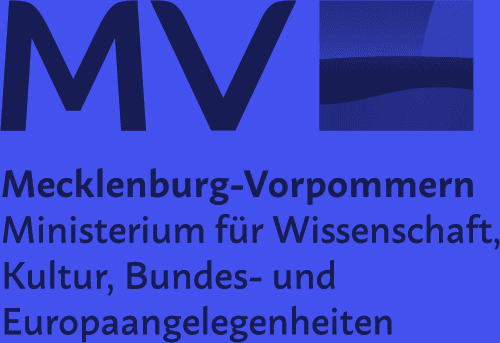
PLAYFUL, POLYPHONIC LISTENING
Lea Moro: EARS TO SEE
What do we perceive when we listen more closely? How does our perception shift when we focus on our ears? Together with the young listeners and participants of Lea Moro’s piece “Ears to See”, the Berlin radio artist and researcher Kate Donovan (www.mattersoftransmission.net) embarks on a multi-layered, acoustic journey into the environment of the fabrik Potsdam.
By Kate Donovan. | 12 July 2022
On an unusually warm and sunny March day, we were waiting outside fabrik Potsdam for Ears to See, the performance by Lea Moro, to begin. We knew that it was going to be exploratory and sensory. We knew that it was going to be about listening, but I wondered what kind…
As we waited, I began to move between the sun and shade in the yard outside. There were the sounds of kids waiting, of someone on the phone, more kids playing at the playground nearby, people sitting outside at various terraces having lunch. There must have been the sounds of birds, perhaps water (we were not far from the water’s edge), or boats, but I must admit that my recollection only leads to human-generated sounds. I wondered if we were about to embark on a journey into noticing—the lichen, the buds pushing through into Spring, the matter resting on the water’s surface. I looked down among the cobble stones and noticed minuscule flowers growing in the dirt in-between.
Anna Tsing has written about the art of noticing, and although she is writing about assemblages in human and non-human world-making in relation to capitalism, many current practices of listening use a similar strategy to prioritise perception as a form of attuning, of caring, of paying attention to the often neglected things, which may lead to a recognition of both relationality and difference. The title of the piece we were waiting for —Ears to See/Ohren Sehen—shows an intentional dynamic shift towards de-centring the visual in order to make space for the audible; an intentional shift that Arthur Russell also sang in 1986: “I’m watching out of my ear”.
But this was not the only perceptual push we were about to encounter: listening was not meant in a purely auditory sense, but as a more tactile mode of reception and attunement—sensorial, and imaginative.
Once inside the theatre, it slowly became apparent that we were in ‘the heart of the city’. One kid asked “Warum machen sie das so langsam, alles?” a great observation, and indeed, one could argue that slowing down is the first step towards noticing…
We were split into three groups, handed headphones and led outside to begin our polyphonic journey. Our headphones were actually radio receivers, receiving both the voice (and breath) of our guide, and, later, the audio she played. She explained that “the antenna connects us”, and there was a distinct sense of collectivity in this radio bubble— we were all receiving the same signals from our guide. Bound by invisible frequencies, we were all intimately engaged, especially with the sound of her voice. Small-scale radio transmissions are often used to create site-specific, collective listening experiences, in sound walks, guided tours and similar activities, yet it is rarely mentioned as part of the technological infrastructure; perhaps ‘radio’ seems too anachronistic.
As is often the case with child pedagogies, an element of anthropomorphism was used as a tool to create a connection with, or empathy for, non-human others. These entities were given a (human) voice. But kids are used to this; remember all the bears and rabbits in picture books who wear clothes and carry watches and sleep in beds with pillows and blankets? This is not to say that kids don’t get what’s going on or understand the power dynamics of anthropomorphism; this is to say that kids usually have a more playful imagination. Part of being playful is suspending disbelief: more things become acceptable under the umbrella of playfulness.
One of the beauties of radio is that the removal of sound from the sound source (the invisibility of the origin of the voice) lends itself to the imaginary. We could hear the voice and story of the snake in the sewers right outside the manhole, and could therefore imagine what we could not see. In this sense, listening can be like reading—the visual aspect remains unbounded in the plasticity and fluidity of our mind’s imagination. Radio/ theatre-maker Pavlica Bajsić Brazzoduro speaks of the collective nature of imagining through such a listening experience: “we have the freedom to create associations and images in our heads and because of that our listeners become our co-creators. When the image is missing and we are only left with the sound, that break allows for our brains to turn to the inner mechanisms of imagination and it evokes our conscious and unconscious thoughts, our emotions, memories, projections.”
Listening through headphones created a very particular listening experience. In a way, we were cut off from our immediate sound environment, yet bound to one another through the collectivity of our shared sonic reception. Our guide suggested that we leave one earphone on and the other off, in order to be able to listen to our environment at the same time. I don’t think anyone in our group went for this (perhaps uncomfortable) option, also because it requires more focus to pay attention to the environmental and narrative layers. This is not to say that polyphonic listening cannot work: in our radio art project Datscha Radio, we make radio from gardens and encourage listeners to tune in from a garden or outdoor space – most explicitly in 2017 (Donovan, 2018). In these layers of listening, the sounds of one’s immediate space weave together with the sounds of the transmission. This can unfold in a sense of collectivity through a shared listening experience with others both near and far, and simultaneously produce a kind of grounding with the immediate environment. This is an experience of polyphony. In terms of listening, Anna Tsing writes: “When I first learned polyphony, it was a revelation in listening; I was forced to pick out separate, simultaneous melodies and to listen for the moments of harmony and dissonance they created together” (2015, 24).
Such listening requires time and concentration, and this theatre piece, perhaps because it was aimed at young audiences, was too dynamic for such an engagement: we were on a journey, noticing where we were and what was being narrated to us. This was a more physical and tactile listening, perhaps more akin to what Cecilia Vicuña would call “Listening with the fingers” (1983). But polyphony was there in another form, in the form of voice/s, narration, storytelling. Multiple entities spoke to us, out of multiple times and spaces. A snake took us under the earth, into the sewers. Water took us back to its origin at the beginning of Earth-time.
There were moments when we were guided towards allowing ourselves to be vulnerable—by closing our eyes and walking together connected by a rope; by letting ourselves rummage in the textures of the mud; by getting tumbled around in the eye of a storm. A kind of playfulness is necessary in order to engage in this way, a playfulness that seemed abundant in my kid-companions. Maria Lugones writes “Playfulness is, in part, an openness to being a fool, which is a combination of not worrying about competence, not being self-important, not taking norms as sacred and finding ambiguity and double edges a source of wisdom and delight” (1987, 17). Perhaps playful listening could be a way to de- centre the self, to recalibrate the position of the human with/in a bigger assemblage of entities.
Perhaps, by listening playfully we could allow ourselves to imagine, allow ourselves an openness to what we cannot directly perceive.
References
Bajsić Brazzoduro, Pavlica, and Lucija Klarik. “Pavlica Bajsić Brazzoduro: ‘Audio Creates a Whole New Dimension.’” See Stage, 2 May 2022, https://seestage.org/interview/pavlica- bajsic-brazzoduro-audio-creates-a-whole-new-dimension/. Accessed 4 May 2022.
Donovan, Kate. ‘The Radio Garden. On Datscha Radio 17’. Expanding Radio. Ecological Thinking and Trans-scalar Encounters in Contemporary Radio Art Practice, 2018, S. 52-71. https://archive.org/details/DONOVANExpandingRadio/
Lugones, María. “Playfulness, “World”-Travelling, and Loving Perception.” Hypatia, Vol. 2, No. 2 (Summer, 1987), pp. 3-19.
Russell, Arthur. “Tower Of Meaning / Rabbit’s Ear / Home Away”, World of Echo, Upside Records/Rough Trade Records, 1986.
Tsing, Anna Lowenhaupt. “Arts of Noticing,” The Mushroom at the End of the World. On the Possibility of Life in Capitalist Ruins. Princeton University Press, 2015, pp.17-27.
Vicuña, Cecilia. “Entering”, Poems, New York, 1983.

















